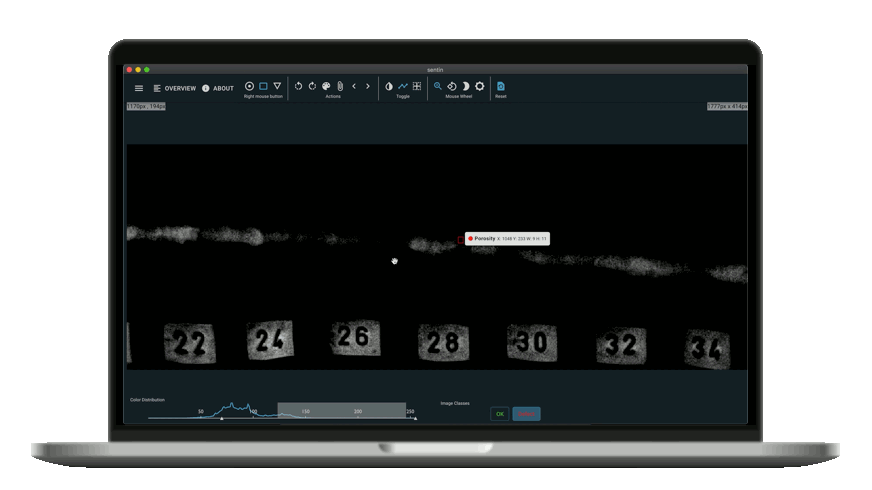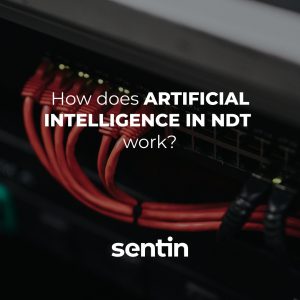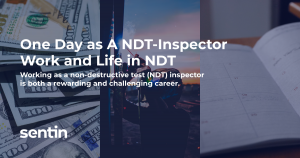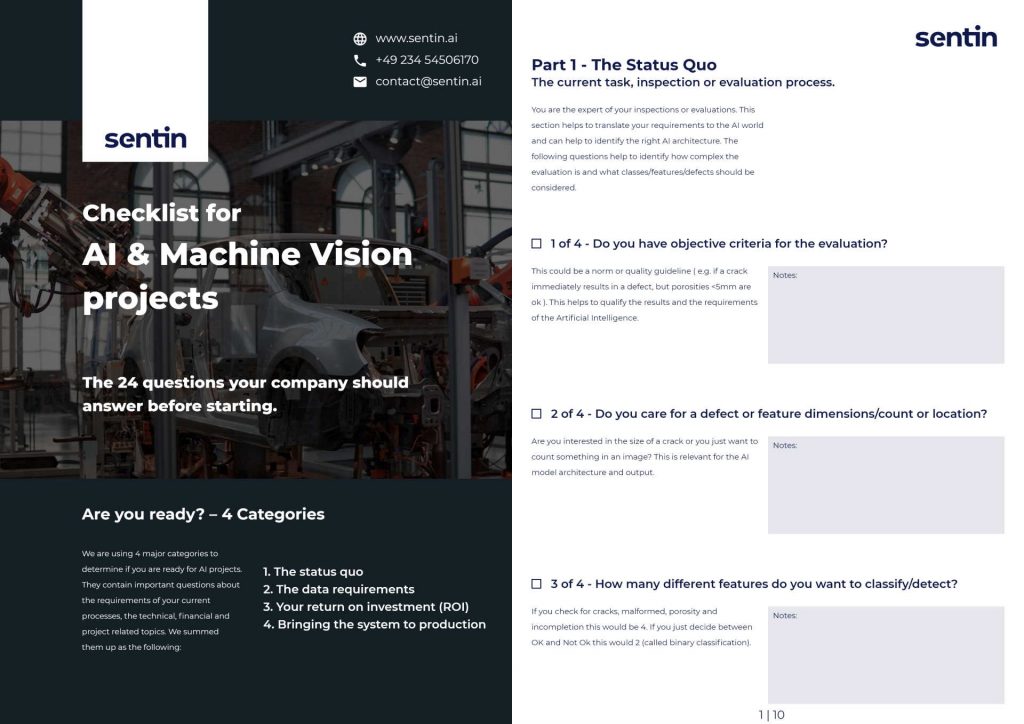Marija Bertovic is a chairwoman of the DGZfP subcommittee “Human machine interaction” within the committee “NDE 4.0” and a secretary of the ICNDT specialist international group “NDT reliability”.
In 2017 she was awarded a certificate of merit for her overall contributions to the field of NDT and in 2018 the Scientific Award by the German Society for Non-destructive Testing (DGZfP) for this work
Nowadays Marija Bertovic is advising on how to include human factors into reliability assessments and simulations and how to make sure new technologies (NDT 4.0, industry 4.0, hydrogen) get accepted, are usable and used appropriately.
Marija Bertovic on Research Gate and LinkedIn
Here is a little overview about the questions Marija Bertovic and we talked about:
- Marija Bertovic: Her way to becoming a human Factors Research Scientist in NDT
- Chances for NDT 4.0 and human factors
- Certifications & POD for NDT 4.0
- The international future of NDT
Experiences and thoughts
sentin: How important are standards and certifications for such a system? Is there any other way to establish trust in an artificial intelligence?
Marija Bertovic: Standards and certifications are for sure crucial for the newly developed systems to gain trust and wide acceptance. However, I see potential for raising acceptance not only by ensuring technical capability but also by ensuring that those technologies are easy to use. Therefore, I strongly advise NDT community to get familiar with the standards on human-centred design and usability.
Similar to reliability, that is often only a measure of an idealised performance in a lab, whereas the influences of other factors, such as the human factors are acknowledged but neglected; it is necessary to include those factors when designing or assessing the technology, as they will tell us how this system will actually function and be used in the practice, allowing us to detect potential problems before those systems are put In use.
sentin: Among other things, you are researching in the field of POD (Probability of Detection). In medicine, doctors are now supported by an AI when diagnosing images. Do you see parallels to NDT here?
Marija Bertovic: Of course. From the psychological perspective, there is not much difference between evaluation of xrays conducted by a radiologist or a material scientist: similar principles apply. The difference may only be in the fact that an error in medicine may cost one or several lives, whereas an error in the industry such as nuclear, chemical or aerospace can affect a significantly larger amount of people and have a disastrous effect on the environment. Therefore, reliability of NDT is especially important.

I read recently that one of the first big areas AI will find Its implementation will be to replace general practice doctors, as what they primarily do is diagnose based on the combination of given symptoms. I can see this happening and support the idea that AI may be much more efficient in this task than people. The aim of developing this technology is indeed to take advantage of AI to relieve people from tedious, monotonous tasks, requiring large amounts of memory and attention, i.e. tasks people are generally not good at and to allow them to focus on tasks people excel at: solving complex problems.
“In NDT, as well as in medicine, there is a large number of tasks that can be replaced by AI. However, there will always be tasks that technology will not replace, and a need for people to solve problems that technology is not able to, which is why people will always remain in the centre of the industry and of the AI technology.”
Thus, we need to be careful not to be overrun by our own aspirations to achieve what used to be unimaginable. There should always be an ON/OFF switch controlled by a qualified, skilled and experienced human expert.
sentin: What accuracies can examiners achieve in the near future with an assistance system?
Marija Bertovic: I believe the accuracy of the technical systems will for sure increase with time (at least that is what is promised to me by my fellow engineers). However, I believe people can achieve greater efficiency with those systems only if the systems are designed to be an aid and not a burden, in line with what I’ve already mentioned before.
National and international future in NDT
sentin: You are also active internationally. What are the national and international differences?
Marija Bertovic: It has been my experience that there has always been more openness towards understanding and addressing human factors and nowadays towards human-machine Interaction in NDE 4.0 on the international level, than it has been in Germany. In Germany, standards play a very important role and so far, to my knowledge, there are no standards (nationally or internationally) mentioning how to address the human factors (except in terms of training, qualification and certification). However, it is also Germany that is aiming currently to rectify this. Within a WIPANO project that we just started at the end of 2020, we are working towards developing a guideline for the assessment of the reliability of NDT including human factors, for which we hope will one day result in a standard. So, stay tuned.
sentin: If you think several years into the future. What does this look like with regard to the POD and the HMI?
Marija Bertovic:
“In their strategy on AI, the German Government has repeatedly stated that AI-technologies need to be developed with the people in the centre.”
Thus, I hope it will become unavoidable to pay attention to HMI. That means that technology will be developed with people and for people, tested in the lab until the HMI is efficient, reliable and safe. This means that the technology that will be put in the field will surely function well with humans using them. This is something that our up-to-date POD approaches have been missing, focusing only on the technical capability, and was often criticized by our group
sentin: Assuming you had one wish to advance the issue. What would you wish for?
Marija Bertovic: I would wish that user-centred design becomes a vital part of the development of NDT technologies and procedures. I often get asked what I mean by “developing with the users”. Imagine an iPhone developed by a team of experts and never tested on millions of users world-wide and reshaped according to their feedback. Would it be as intuitive as it is? Would it correspond to your expectations as well as mine? Would it be as easy to use for our parents as well as for our kids? I am not suggesting NDT equipment should be tested by millions of users, but it should be developed and continually tested with a large enough representative number of its potential users. That is, the potential users should be involved from the conception phase (e.g. which functions do they need?), over the prototyping (e.g. does it work as I expect it?) to the final design of the system. User experience design (UX) is no longer such an unknown term.
“I hope it will become more known in NDT.”

About Marija Bertovic

Senior human factors research scientist at Federal Institute for Materials Research and Testing
DGZfP
- Member of the German Society for Non-Destructive Testing
- Science Award 2018
BAM
- Coordinator of the NDT department WG “NDT-AI”
Marija Bertovic is an Awarded and experienced research scientist in the area of human factors in reliability of non-destructive testing (NDT). Actively pursuing projects related to human machine interaction (HMI) in industry 4.0 (artificial intelligence, NDT 4.0, machine learning, user experience, software development, augmented reality etc.).
Chairwoman of the subcommittee “Human Machine Interaction” of the DGZfP technical committee on NDT 4.0; Secretary of ICNDT Specialist international group “NDT reliability” and coordinator of the NDT department WG “NDT-AI” (BAM)
Skilled and experienced in usability testing, risk assessments, experimental method and coordination, human factors training and consulting.
She is a receiver of the Science Award 2018 by the German Society for Non-Destructive Testing (DGZfP) and repeatedly a keynote and plenary speaker.
Member of the German Society for Non-Destructive Testing (DGZfP), Academia NDT International and Human Factors and Ergonomic Society – European Chapter.
See how AI in NDT works
What is the sentin EXPLORER?
Marija Bertovic strongly advises NDT community to get familiar with the standards on human-centred design and usability. This is one way, to develop a user friendly software for the usage of AI in Non-Destructive Testing. Also the medicine works with softwares which are based on this development. Doctors are getting supported by them when diagnosing images. “An error in medicine may cost one or several lives, whereas an error in the industry such as nuclear, chemical or aerospace can affect a significantly larger amount of people and have a disastrous effect on the environment.” This quote describes the importance of a software which brings the AI in the industry. Lots of tasks can be replaces by an AI, so many people work on softwares to make these better and more efficient. This is why the “German Government has repeatedly stated that AI-technologies need to be developed with the people in the centre.” So user-centred design becomes a vital part of the development of NDT technologies and procedures.
The sentin EXPLORER is a tool to automate such inspection or image evaluation tasks. Our customers sometimes produce thousands of images per week, all of which have to be reliably checked. Therefore we give you the power to perform evaluations with the help of artificial intelligence and to find defects more reliably or gain new insights.
If you want to learn more: The 5 Types – What is Non-Destructive Testing (NDT)?






